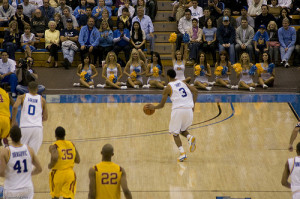Defensive Transition and the Progression to becoming an Elite Team
Defensive Transition would be one of the last aspects to be developed in many teams’ phases of play. Defensive transition is often left out of discussions about basketball defence and as a result its development as an area of basketball to be philosophised is not widely appreciated. Search for defensive transition on the internet and an eclectic mix of results will be found, some relevant, most don’t discuss with any purpose the strategy and tactics which surround this important aspect of basketball.
Transition is often one of the key aspects which will separate fully developed teams, and those good teams which struggle to progress to the next stage of excellence. The same can be seen in coaches as they struggle to come to terms with this aspect of their own basketball ideology. The interesting thing about defensive transition is that because of the lack of constructive discussion around this topic, many coaches who do have a transition strategy, or sometimes only have the one, and cannot be flexible in their selection of wider and more diverse options to meet the demands of their oppositions play.
Before moving into what your options can include on defensive transition, it is important to highlight exactly where defensive transition as a defensive phase in basketball starts and finishes. Defensive transition should start with the offensive rebound attempt. At its simplest the defensive transition starts with the shot in your offense. Similarly to when defensive players call out shot and box-out, alternatively the offensive players should be moving into their desired offensive rebounding coverage, and finally the team’s defensive transition alignment.
So where does defensive transition finish? It depends on what type of defence you are running. If you are playing defence in the full court like a zone press or trap then the defensive transition will finish relatively quickly once players find their specified positions. However if you are using a man to man defence in the full court then the defensive transition may form part of your player movement and rotations until the ball is outside your oppositions defensive third of the court.
There are a few different options with regards to defensive transition to choose from. Some of them are listed below:

Individual Player Match-up: This is probably the most utilised in junior ranks. Players simply find a predetermined player to guard in the full court. Variations to this might be finding the player in the full court or half court. As a variation to this defensive transition tactic for greater flexibility players can be grouped into guards and forwards to allow different players to match-up with the closest player of that type (Guard or Forward respectively).
Numbered Area Match-up: In this defensive transition defensive players retract depending on the movement of the offensive players. Defensive players will be responsible for players who move into their area of responsibility. This might include the first “big” over halfway or the outlet pass receiver. This is good for players who are just learning how to utilise and play with a constructed defensive transition.
Lane Match-up: In this strategy players (usually forwards and centre) move in the full court down predetermined lanes of the court (left, right and centre lanes). Within this tactic defensive players cover any offensive player who moves down their lane. This match-up continues until the right rotation can be made in a safe manner while on defence. The Guards would follow the same principle, but divide the back court in half and the first ball handler into each area would be who they match-up with.
Zone Match-up: This tactic tends to be the most difficult for players to master as it asks players to react in a very disciplined and specific way to when a shot happens. Players move into positions (including offensive rebounding assignments) then depending on where the ball moves they rotate to cover players and provide support in help defence.
Offensive rebounding is a terribly underrate skill of many basketball programs and teams. Defensive transition is useful in being able to focus on this aspect of the game of basketball while providing coverage and structure to the management of possible fast break and offensive transition threats.
There are surprisingly many different variations of defensive transition systems. An important aspect for coaches is to find a variety of systems and then look to establish which is most appropriate for your team.






